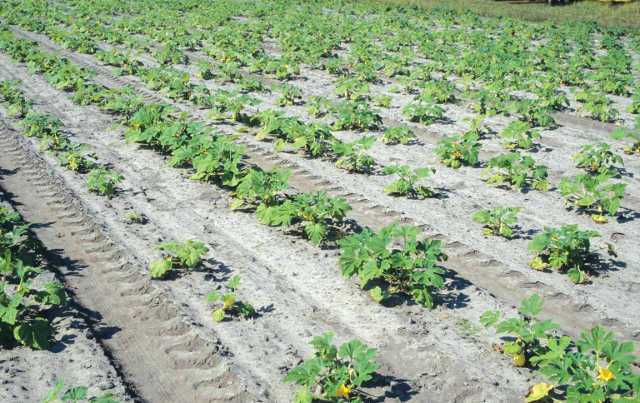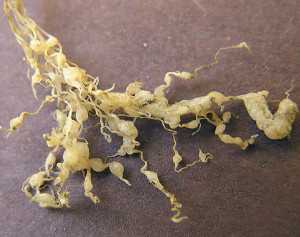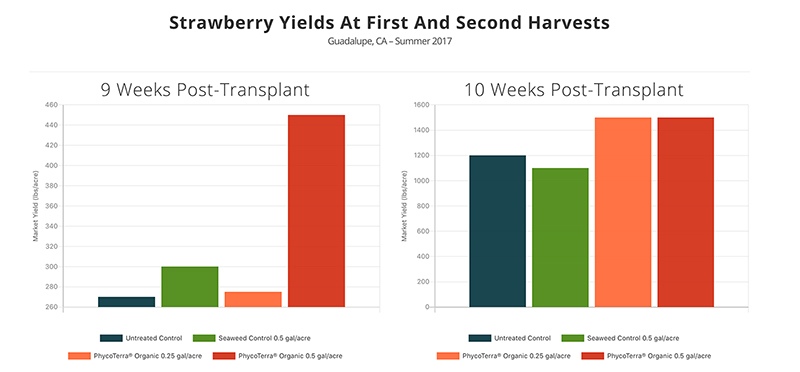Know Your Nematodes
Nematodes are an invisible yield robber that can affect most commercially grown vegetable crops in Florida. Yield reductions can be significant, but will vary based on crop and species of nematode. In addition, nematode damage can predispose plants to infection by fungal or bacterial pathogens to transmit diseases.
What To Look For
Typical symptoms of nematode damage can appear above and below the ground in foliage and roots. Foliar symptoms generally appear in the form of stunting of plants, premature wilting, and leaf chlorosis (yellowing). Plants displaying these symptoms generally occur in patches rather than showing across an entire field, following the usual irregular distribution of nematodes in fields.

Photo by Gerald Holmes
Under heavy nematode infestation, crop seedlings or transplants may fail to develop, maintaining a stunted condition, or die, causing poor stand development. Under less severe pressure, symptom expression may be delayed until later in the crop season after a number of nematode cycles have been completed. In this case, the above-ground symptoms may not be as readily apparent.

Photo by David Langston
Root symptoms caused by sting or root-knot nematodes can present very noticeable symptoms. Sting nematodes can form a tight mat of short roots that often assume a swollen appearance. New roots are generally killed by heavy infestations of the sting nematode.
Root-knot nematodes are characterized by the swollen areas on the roots called galls. Galls may range from a few swellings on roots to extensive areas covered, which are caused by exposure to multiple and repeated infections.
Nematode Numbers Up
According to Dr. Joe Noling, an entomologist with UF/IFAS, surveys conducted by county-level Extension personnel indicate nematode problems are on the increase. This could be in part due to the phase-out of methyl bromide.
“Because there are many who would be very quick to point it out, methyl bromide was not perfect by any means,” he says. “It could have its problems, particularly if soil moisture, temperature, and land preparation were suboptimal. But, it did provide a level of consistency in the long term that does not appear to be matched.
“Every alternative system has a caveat, particularly when it comes to weeds and the need for complementary herbicides. I have repeatedly counseled and cautioned Florida nematodes cannot be effectively managed without an integrated management program for weeds. I believe the worsening effect is partially attributable to increased weed pressures.”
Noling adds that part of the worsening nematode problem might be caused by methyl bromide alternative fumigants with lower vapor pressure to diffuse into deep soil horizons below traffic pans.
What To Do
While researchers and growers develop methods to replace methyl bromide, Noling says the age old IPM concept of early crop destruction is an important step in fighting nematodes. “At the end of harvesting, kill the crop’s roots and the nematodes captive in the bed,” he says. “This is essential to double crop and particularly after the double crop with highly susceptible cucurbits. In heavily infested fields, growers might be wise to avoid the double crop altogether.”
The use of poor or non-host cover crops within the rotation sequence may provide an effective approach to nematode management. Four leguminous cover crops adaptable for managing soil populations of sting or root-knot nematode include iron clay cowpea (Vigna unguiculata cv.), sunn hemp (Crotalaria juncea), hairy indigo (Indigofena hirsuta), and American jointvetch (Aeschynomene americana).
Clean fallow during the off-season is probably the most important and effective cultural control measure available for nematodes. When food sources are no longer readily available, soil population densities of nematodes gradually decline with death occurring as a result of starvation. Due to the wide host range of many nematode species, weeds and crop volunteers must be controlled during the fallow period to prevent nematode reproduction and further population increase. At least two disking operations are generally required to maintain clean fallow soil conditions during the interim period between crops. Fallowing by use of herbicides to deplete nematode populations is a much slower process because the soil is not disturbed, thereby subjecting nematodes from deeper soil layers to the drying action of sun and wind.
Currently, three-way packages are being utilized to fight pests and diseases in crops. “Preplant fumigation with both Telone (1,3-Dichloropropene, Dow AgroSciences) for nematodes and chloropicirn for disease are an option,” says Noling. “It will involve a three-way approach, including mini-coulter applications of KPAM (potassium N-methyldithiocarbamate, AMVAC) to the plant bed, in addition to herbicides. It is not a cheap proposition, nor is it immune from problems.”
For more information on nematode management in vegetables in Florida, click here.










